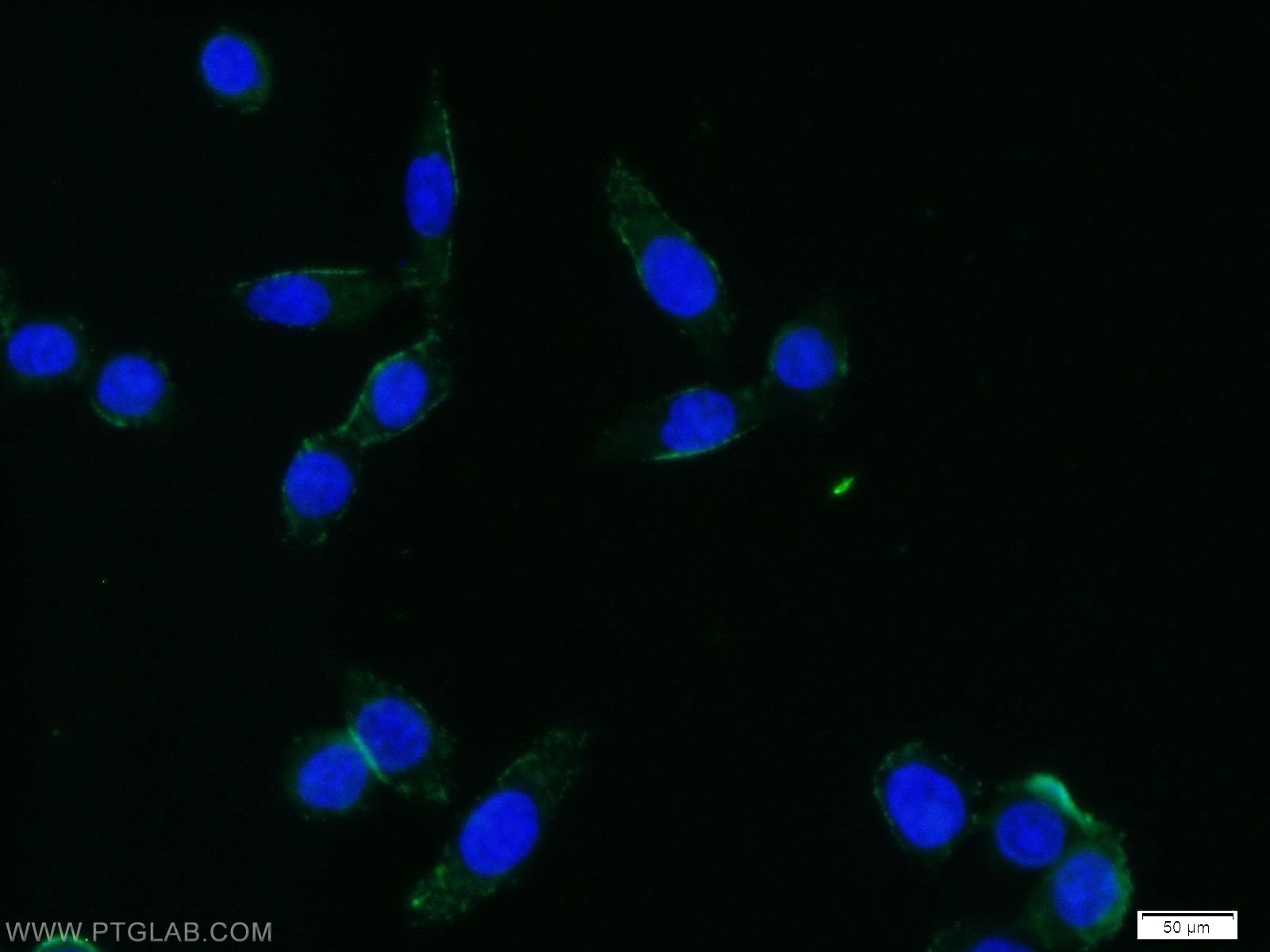MLC1 Polyklonaler Antikörper
MLC1 Polyklonal Antikörper für IF, ELISA
Wirt / Isotyp
Kaninchen / IgG
Getestete Reaktivität
human, Maus, Ratte und mehr (2)
Anwendung
WB, IF/ICC, ELISA
Konjugation
Unkonjugiert
Kat-Nr. : 12183-1-AP
Synonyme
Geprüfte Anwendungen
Veröffentlichte Anwendungen
| WB | See 2 publications below |
| IF | See 2 publications below |
Produktinformation
12183-1-AP bindet in WB, IF/ICC, ELISA MLC1 und zeigt Reaktivität mit human, Maus, Ratten
| Getestete Reaktivität | human, Maus, Ratte |
| In Publikationen genannte Reaktivität | human, Affe, Hausschwein |
| Wirt / Isotyp | Kaninchen / IgG |
| Klonalität | Polyklonal |
| Typ | Antikörper |
| Immunogen | MLC1 fusion protein Ag2829 |
| Vollständiger Name | megalencephalic leukoencephalopathy with subcortical cysts 1 |
| Berechnetes Molekulargewicht | 65 aa, 7 kDa |
| GenBank-Zugangsnummer | BC010518 |
| Gene symbol | MLC1 |
| Gene ID (NCBI) | 23209 |
| Konjugation | Unkonjugiert |
| Form | Liquid |
| Reinigungsmethode | Antigen-Affinitätsreinigung |
| Lagerungspuffer | PBS with 0.02% sodium azide and 50% glycerol |
| Lagerungsbedingungen | Bei -20°C lagern. Nach dem Versand ein Jahr lang stabil Aliquotieren ist bei -20oC Lagerung nicht notwendig. 20ul Größen enthalten 0,1% BSA. |
Hintergrundinformationen
MLC1, also named as KIAA0027 and WKL1, is a membrane protein which causes Megalencephalic leukoencephalopathy with subcortical cysts. MCL1 regulates the response of astrocytes to hypo-osmosis by promoting calcium influx.
Publikationen
| Species | Application | Title |
|---|---|---|
Int J Biol Macromol Proline rich-39 (PR-39) antimicrobial protein alleviated lipopolysaccharide-induced intestinal barrier dysfunction in piglets by altering intestinal flora associated bile acid metabolism and in turn regulating TGR-5/NF-κB/MLCK/MLC pathway | ||
J Control Release Fluorinated chitosan mediated transepithelial delivery of sanguinarine-loaded platinum (IV) prodrug for intravesical instillation therapy of muscle-invasive bladder cancer | ||
J Med Virol Vaccinia virus induces EMT-like transformation and RhoA-mediated mesenchymal migration |


